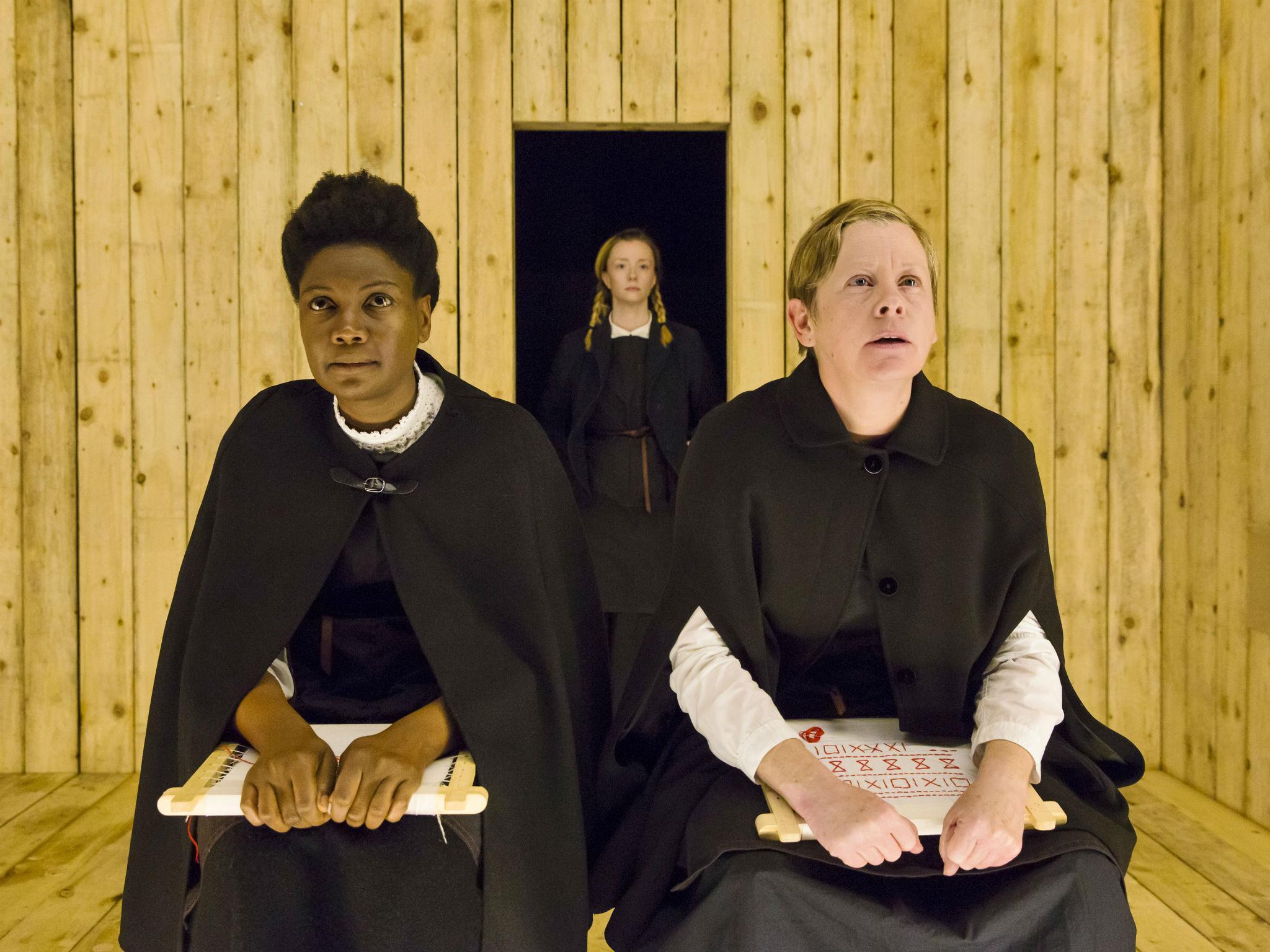The Sewing Group, Jerwood Upstairs, Royal Court, London, review: Newcomer Fiona Glascott is excellent as Maggie
EV Crowe's new play is about a woman who has a desire to sew in a rural village in pre-industrial England, but the group she learns from grow suspicious of her

Your support helps us to tell the story
From reproductive rights to climate change to Big Tech, The Independent is on the ground when the story is developing. Whether it's investigating the financials of Elon Musk's pro-Trump PAC or producing our latest documentary, 'The A Word', which shines a light on the American women fighting for reproductive rights, we know how important it is to parse out the facts from the messaging.
At such a critical moment in US history, we need reporters on the ground. Your donation allows us to keep sending journalists to speak to both sides of the story.
The Independent is trusted by Americans across the entire political spectrum. And unlike many other quality news outlets, we choose not to lock Americans out of our reporting and analysis with paywalls. We believe quality journalism should be available to everyone, paid for by those who can afford it.
Your support makes all the difference.E V Crowe's intriguing new play begins with two women stitching on lace stretched by little embroidery frames, in a bleak-looking room constructed entirely of wooden planks. They work intently by the light of a single candle. Then a newcomer, Maggie (Fiona Glascott) – the only one of these women who's accorded a name – arrives and in series of abrupt, tableau-like black-out scenes we see her trying to grasp the rhythms and preoccupations of this pre-industrial rural world.
Soon, though, Maggie is dominating the proceedings with her innovative patterns, invention of memorial quilts made from the clothing of the deceased, and more competitive ethos. Is she supposed to epitomise the first stirrings of the industrialisation that put paid to communities such as this?
It depends on whether you mean before or after the fact. There's a scattering of verbal hints as to what might be going on here. Maggie tells the others that she's very “task-orientated” and confuses us as much as her “aunt” when she declines to accept a piece of bread on the grounds that she is “gluten free”. The vicar (John Mackay) gives her a weird-sounding progress report, saying that the community has enjoyed having her but feels that she has strayed a little from the “agreed arc”. Maggie, meanwhile, starts to get very exercised about the “score” she is going to be given.
Stewart Laing's production (which he also designed) beautifully handles the wobbling and dismantling of frames and the slippery suggestion of scenarios within “scenarios”. Crowe's play finds a clever way of exploring the knotty issue of nostalgia for a supposedly simpler past, by a deliberately problematic juxtaposition of the lives of women in the pre-industrial era with the lives of affluent women holding down top jobs in the Silicon Revolution (“It's the Renaissance two"). How trustworthy, we're invited to ask, is the depiction of either?
The Sewing Group is insightful about the difficulties of writing a history play: on the one hand, all history plays of any value are about the present; on the other, it is so easy for our perception of the past to be distorted by the parochial requirements of the present. We can never know enough about how the past felt to itself by studying the documentary evidence. I don't want to give too much away about the fundamental set-up in Crowe's piece or its economics, but it does raise thought-provoking questions about this dilemma.
Glascott is excellent at each stage of Maggie's evolution – snarky wit, fierce denial and resistance; raw unravelling and willed re-grouping. There's a wonderful sequence where she is showered in the blossom she was intended to learn to smell as she waits for... ah, but that would be telling. Recommended.
Join our commenting forum
Join thought-provoking conversations, follow other Independent readers and see their replies
Comments